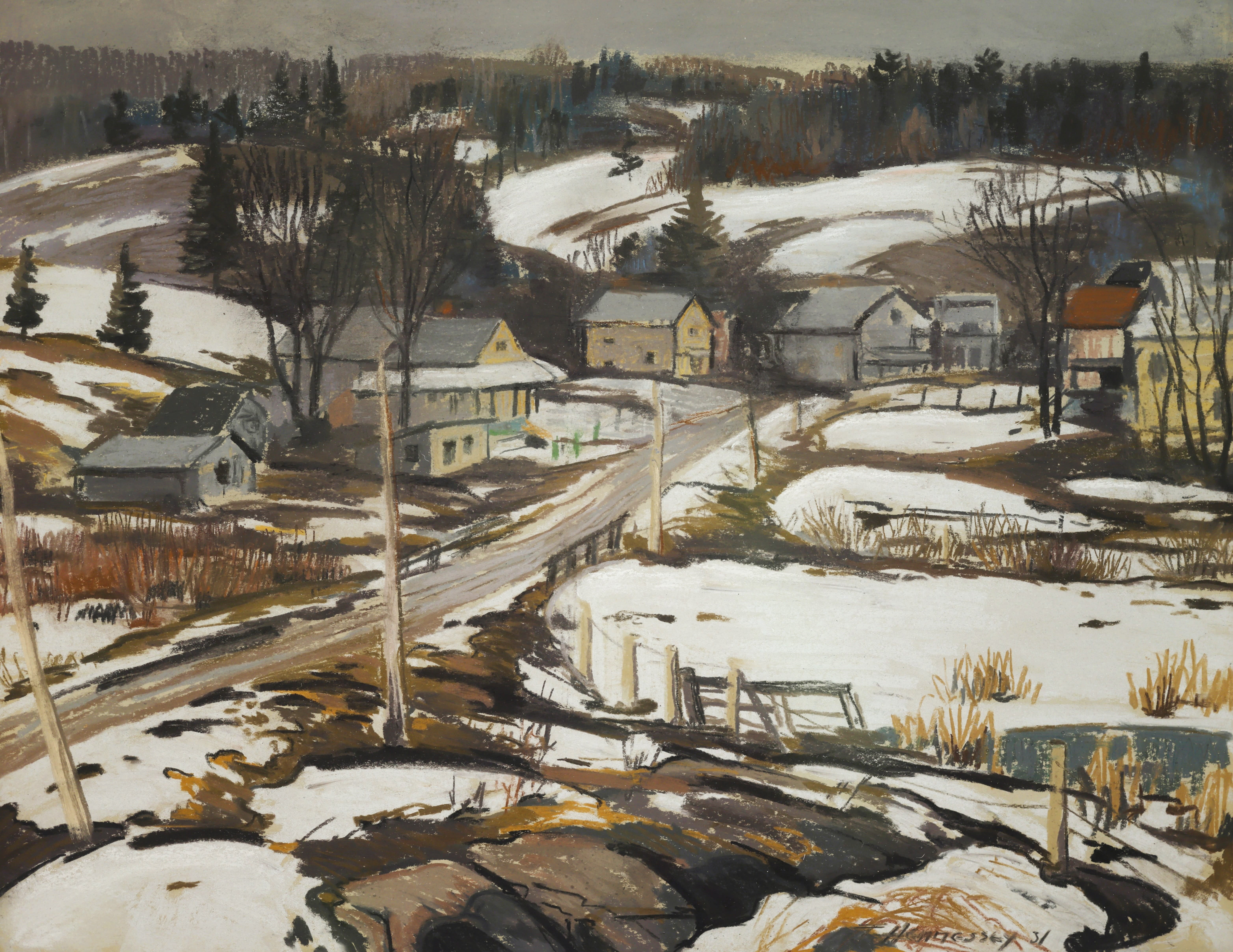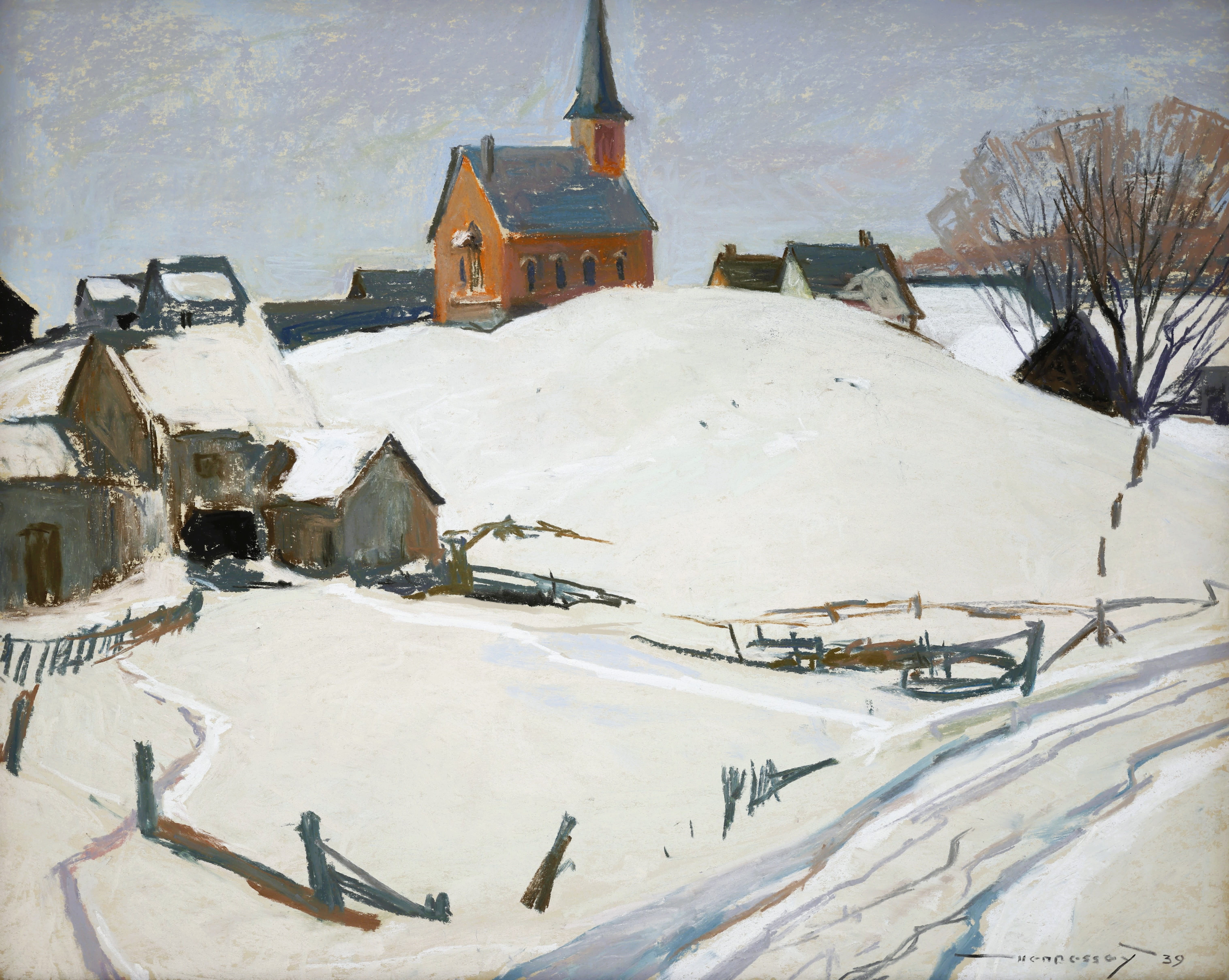
Frank Hennesy; Road Through the Forest
Hennessey's education included attending St. Patrick's School and Ottawa Collegiate, and later he graduated with a Bachelor of Arts degree from Albion College in Michigan, USA. His interests were diverse, ranging from sports like hockey and football to nature studies, especially birds, which led to some adventurous but injurious explorations.

Frank Hennessey; A Day in Autumn
His professional career was equally impressive. Between 1913 and 1915, Hennessey worked with the Geological Survey of Canada, contributing illustrations to P.A. Taverner's bird books. He also served as an inspector of explosives during World War I. In 1921, he joined the Department of Agriculture's entomology division, where he continued to work until his death.

Frank Hennessey; Village de Lac Ste. Marie
Hennessey's artistic achievements were numerous. His paintings, particularly of the Algonquin region, received international acclaim, with one of his works, "The Loon," being showcased at the British Empire Exhibition in 1925 and later purchased by the Sheffield Art Gallery. His style, characterized by vibrant colours and luminescence, brought landscapes to life, particularly his winter scenes. He was also known for his masterful use of pastels and oils. His exhibitions were regular and highly praised, contributing significantly to his reputation as a skilled artist.

Frank Hennessey; The Church at Maberly
Despite his successful career, Hennessey's life ended tragically in 1941, with his death being attributed to a combination of personal struggles, including his health and the loss of his mother. His contributions to Canadian art were honoured posthumously, including a memorial exhibition of his work in 1943.
Hennessey's art is held in high esteem, with collections in various prestigious galleries, including the National Gallery of Canada, the Art Gallery of Ontario, and the Museum of the Province of Quebec, among others. His legacy as a skilled draughtsman and painter who captured the Canadian wilderness with a unique and sensitive perspective remains celebrated.








